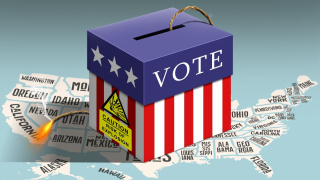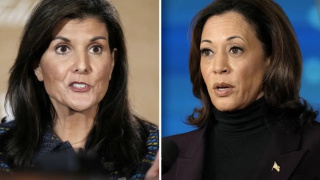Referendum In Venezuela
A nationwide referendum was held in Venezuela on December 3. It was devoted to the territory disputed with Guyana which is called Esequiba. This is a pretty old issue that dates back to the 19th century. Briefly, its history is as follows. As a result of the national liberation struggle, Venezuela gained independence from Spain and its territory included Esequiba. However, there were no strongholds there since the Spaniards did not develop the territory due to the specific climate which caused numerous diseases in Europeans. Dutch possessions that were subsequently sold to England were located closer to the coast. Despite the fact that the border with Venezuela was not defined, UK agent Robert Schomburgk arbitrarily (as is the case with many other territories around the globe) drew a line that resulted in the UK getting a considerable plot of land.
In 1841, Venezuela made claims against the British Empire and accused it of invading its territory. This was followed by the United States getting involved in the matter, holding to its Monroe Doctrine. The UK agreed to US mediation and the dispute was referred to international arbitration in Paris. In 1899, the arbitration tribunal decided to uphold the demarcation, although it dismissed the additional claims of the British Empire. However, it also disallowed Venezuela’s claims as well. It later emerged that the judges were clearly not impartial and were acting in London’s best interests. At that time, Esequiba was of interest because of its gold reserves and Britain could not resist such a tasty morsel.
However, the most interesting thing is that in 1966, three months before Guyana was granted independence, Great Britain executed a treaty with Venezuela in Geneva, whereby it recognized Venezuela’s claims and agreed to seek acceptable solutions to resolve the dispute. However, British Guiana became Guyana and London kept aloof as was the case with many other territories, where its actions previously provoked conflicts and civil strife. Since Guyana became its legal successor, claims were already addressed to it.
Esequiba’s territory is 159.5 thousand square kilometers. To imagine its scale, its area can be compared with other territories. It’s larger than the Republic of Bashkortostan in Russia (143.6 thousand sq. km.) and almost twice the territory of Serbia (88.3 sq. km.). When compared with Venezuela, it is 15% of its territory.
Its soils are reach in bauxite, gold and diamonds which are mined and generate significant income for the treasury of Guyana. Large oil reserves were discovered in Esequiba’s shelf area relatively recently and ExxonMobil (USA) proceeded with oil production operations there. There are also deposits of manganese, iron, molybdenum, nickel and uranium ores.
Some experts believe that water resources, including the exclusive economic zone and an extensive network of rivers, are also of great importance. The former is directly associated with seafood and offshore production. While the latter is important due to the growing shortage of fresh water.
Venezuela’s actions have developed quite rapidly this year.
Five referendum questions were drafted by the National Electoral Council on October 23, 2023 and approved by the Constitutional Chamber of Venezuela’s Supreme Court on November 1, 2023. They are as follows:
“Do you agree to reject by all means in accordance with the law, the line fraudulently interposed by the 1899 Paris Arbitration Award, which seeks to deprive us of our Guayana Esequiba?”
“Do you support the 1966 Geneva Agreement as the only valid legal instrument to reach a practical and satisfactory solution for Venezuela and Guyana regarding the controversy over the territory of Guayana Esequiba?”
“Do you agree with Venezuela’s historical position of not recognizing the jurisdiction of the International Court of Justice to resolve the territorial controversy over Guayana Esequiba?”
“Do you agree to oppose, by all legal means, Guyana’s claim to unilaterally dispose of a sea pending delimitation, illegally and in violation of international law?”
“Do you agree with the creation of the Guayana Esequiba state and the development of an accelerated plan for comprehensive care for the current and future population of that territory, which includes, among others, the granting of citizenship and identity card? Venezuela, in accordance with the Geneva Agreement and International Law, consequently incorporating said state on the map of Venezuelan territory?”
The referendum was preceded with a powerful information campaign in which state leaders, trade unions, youth and women’s organizations and even religious institutions participated. For example, on December 2, the day before the referendum, a general prayer for peace and Esequiba took place in Bolivar Square in Caracas and was attended by Catholic priests, Protestant pastors and a Muslim mufti. The day before, a rally was held in the center of Caracas where the country’s President Nicolas Maduro, the mayor of Caracas and the speaker of the National Assembly delivered speeches.
A total of 10.55 million people, representing more than 51% of eligible voters, voted during the referendum.
“For” votes cast on these questions distributed as follows: 97.83%, 98.11%, 95.4%, 95.4%, 96.33%.
Guided by the will of the people, the government announced further steps to incorporate Esequiba into its sovereign territory.
At a meeting of the Federal Government Council, President Nicolás Maduro of the Republic said that a new map of Venezuela, including Esequiba in addition to the 24 states of the country had to be published. At that meeting, the President instructed Minister of Education Elisa Santaella, Vice President for Science, Technology and Education Gabriela Jimenez and Minister of Planning Ricardo Menendez to draft an effective plan for circulating the new map to the various educational centers of the country.
In addition, President Maduro instructed Minister for Communes and Social Movements Jorge Arreaza to coordinate the distribution of the map among communities and involve municipal councils, Local Supply and Production Committees (Clap) and the Bolivarian militia into that process.
9,948,430 people voted for the creation of the new state within Venezuela in total.
By the way, even before the referendum, about two weeks later, Guyanese President Irfan Ali visited Esequiba’s territory by helicopter and hoisted the flag of his country there. However, a video was posted shortly after showing Indian children carrying and hoisting the Venezuelan flag. In addition to symbolic actions, the Bolivarian Republic of Venezuela has deployed additional military contingents near its border with Guyana. According to insider sources, construction of a school and hospital has already begun in one of Esequiba’s areas and the site is guarded by the Venezuelan military.
It is obvious that in case of a military conflict between the two countries, then Guyana would have no chance of winning it. Its armed forces are significantly inferior to those of Venezuela. However, given the United States’ interests (ExxonMobil), the Maduro government acts very carefully and has simultaneously launched a negotiation process with this oil company.
A few days ago, Guyanese President Irfaan Ali accepted a proposal for dialogue put forward by his Venezuelan colleague Nicolas Maduro in connection with the conflict over Esequiba territory. The initiative will be launched through the UN and is aimed at maintaining stability in both countries.
This was facilitated by telephone conversations held between President Ali and regional leaders such as President Luiz Ignacio Lula da Silva of Brazil and Prime Minister Ralph Gonçalves of Saint Vincent and the Grenadines.
The fact is that Guyana is a member of the Caribbean Community and CELAC, so the dispute in question affects collective interests one way or another.
At the same time, following Maduro’s conversation with the UN Secretary General, it was decided to hold a high-level meeting without an intervention of external players in accordance with CELAC’s principles.
In addition, there was a mention in the media that the presidents of Venezuela and Guyana would meet on December 14 to discuss the Esequiba issue. So, it is likely that they may succeed in resolving the dispute amicably. But this will be an important precedent contributing to further decolonization and elimination of the consequences of Anglo-Saxon hegemony in the region.











